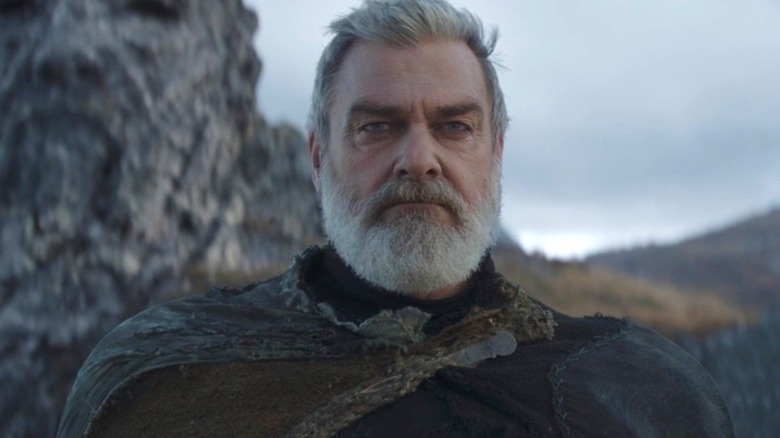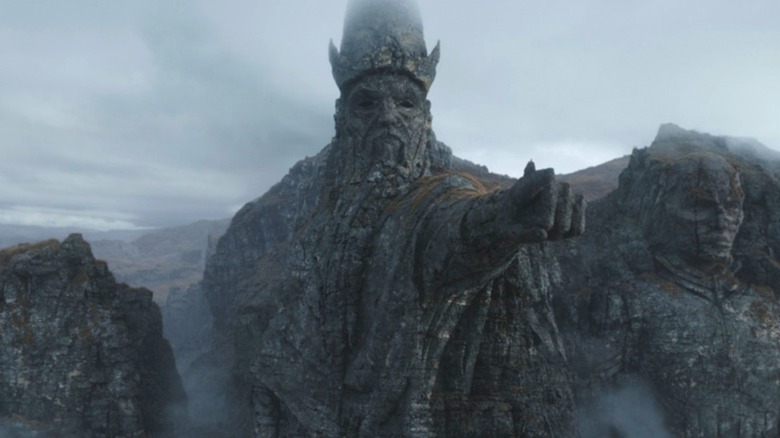Star Wars: Ahsoka Creator Defends One Divisive Baylan Skoll Scene
Baylan Skoll (Ray Stevenson) proved to be one of the most intriguing and popular characters on "Ahsoka," for good reason. Stevenson played the role to perfection; Baylan is shrouded in intrigue and mystery and fights with a masterful controlled aggression. He goes from a dark Jedi to a Force-user wandering the planet Peridea without a purpose by the time the series concludes. When he's last seen, he's standing atop statues resembling the Mortis gods, omnipotent Force-users known as the Father, the Son, and the Daughter, looking ahead to an uncertain future. Surprisingly, this moment has sparked some debate.
Seeing as the Mortis gods are fairly niche characters, only making substantial appearances in a handful of "Star Wars: The Clone Wars" episodes, debate and speculation has arisen regarding their potential prominence in the future. Those who haven't seen "The Clone Wars" might be in the dark regarding their importance, thus making Baylan's story a bit difficult to grasp going forward. However, "Ahsoka" creator Dave Filoni doesn't believe a lack of understanding is an issue. He told Entertainment Weekly, "For me, that's okay as long as you understand that those are monolithic figures, and it means something. That's the power of that image...The question you're supposed to ask is: What does that mean?"
In Filoni's mind, being unfamiliar with the Mortis gods upon watching "Ahsoka" isn't a bad thing. If anything, it contributes to a more traditional "Star Wars" viewing experience.
Star Wars is all about wanting context
In continuing his chat with Entertainment Weekly, Dave Filoni claimed that the lack of context for some surrounding the Mortis gods is actually a good thing. Since the very beginning, "Star Wars" has been about worldbuilding, planting seeds for potential exploration down the line. "It just made me feel like there was a sense of history and depth to the storytelling. So, that's what I was trying to do there," he said, comparing his use of the Mortis gods on "Ahsoka" to some of George Lucas' creative choices in the original "Star Wars" trilogy.
Arguably, the biggest example of "Star Wars" dropping pieces of lore without immediate explanation is one Filoni brings up while speaking to EW: the Clone Wars. The fabled conflict is name-dropped in 1977's "Star Wars," though it isn't fully explained what it is until 2002's "Star Wars: Episode II – Attack of the Clones" puts it on full display for the first time. In the interim, fans had no choice but to speculate on what occurred, how it all went down, and why it was fought in the first place. It fueled fandom interest in the franchise as a whole, making it all the more exciting when answers were finally provided.
One can only hope that fans don't have to wait nearly as long to learn more about the Mortis gods and Baylan Skoll's interest in them as they did to learn about the Clone Wars.

